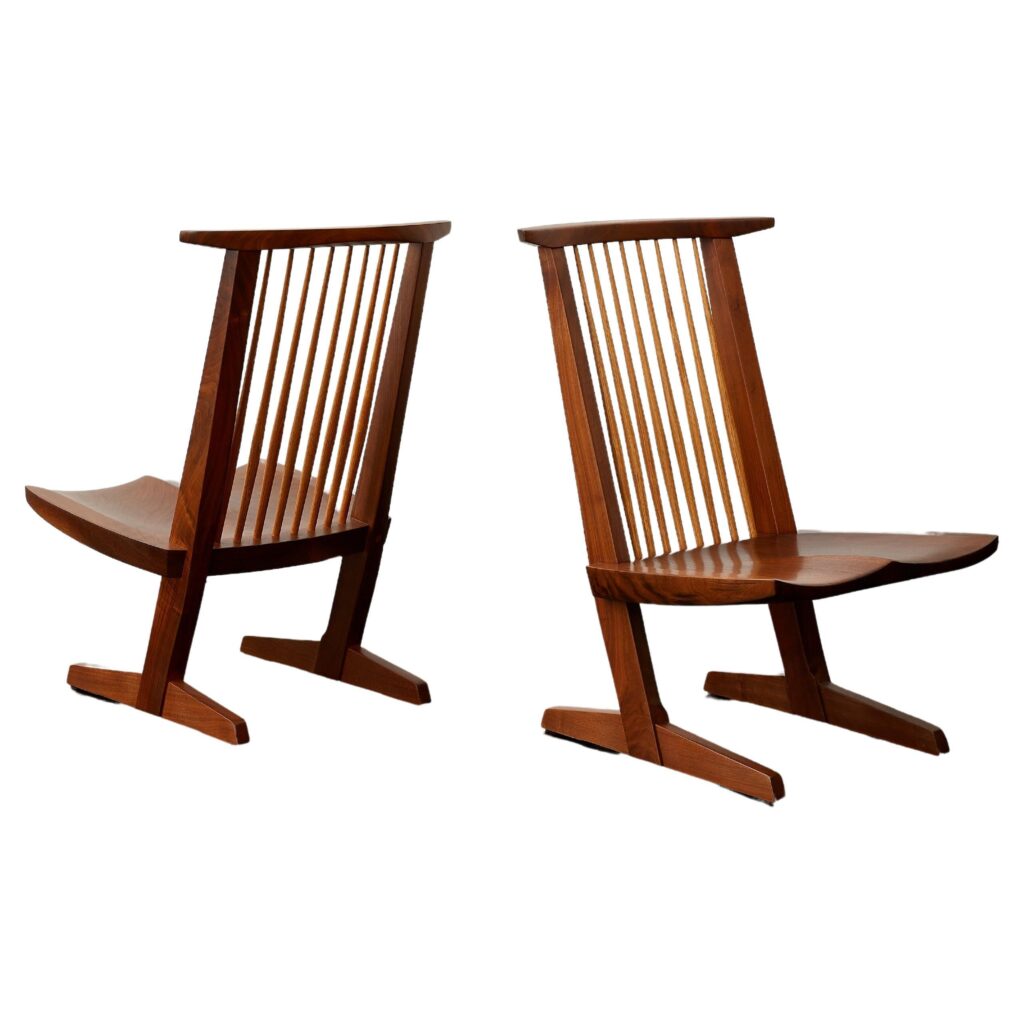George Nakashima, a master of woodworking, created pieces that are not only functional but also works of art. His innovative approach and deep respect for natural materials have made his furniture highly sought after by collectors and restorers alike.
As a furniture restorer, the process of bringing a Nakashima piece back to life is both a challenge and a privilege, allowing one to appreciate the meticulous craftsmanship and unique design elements that define his work.
Why George Nakashima’s Work Was Respected and Innovative
George Nakashima’s furniture is renowned for its organic beauty and innovative design. Nakashima’s philosophy was to let the wood speak for itself, emphasizing its natural form and imperfections. This approach was a stark contrast to the mass-produced, uniform furniture of his time.
Nakashima’s pieces are characterized by their unique shapes, intricate joinery, and use of live edges, which highlight the natural grain and character of the wood. His ability to blend traditional Japanese woodworking techniques with modern aesthetics set his work apart and earned him immense respect in the design world.
The Mid-Century Modern Movement and Nakashima’s Place in It
The mid-century modern movement, which flourished from the mid-1940s to the late 1960s, was characterized by simplicity, clean lines, and organic forms. This design philosophy emphasized functionality and harmony with nature, mirroring Nakashima’s approach.
The movement was a reaction against the ornate styles of previous eras and the impersonal nature of mass production, embracing instead the beauty of natural materials and the craftsmanship of handmade objects.
Nakashima was a key figure in this movement, bringing a unique perspective that blended his Japanese heritage with Western design principles. His furniture pieces, with their focus on natural forms and handcrafted quality, perfectly embodied the ideals of mid-century modern design.
Nakashima’s work stood out for its spiritual depth and connection to nature, making him a revered figure among mid-century modern designers.

Why Furniture Restorers Love Working on Nakashima’s Pieces
Furniture restorers have a particular fondness for Nakashima’s creations. The handmade quality of his work means that each piece is one-of-a-kind, requiring a careful and thoughtful approach to restoration.
The intricate joinery and natural finishes are a joy to work with, allowing restorers to apply their skills and creativity to bring out the best in each piece. The satisfaction of restoring a Nakashima piece lies in preserving its original beauty while ensuring its longevity for future generations.
The Restoration Craftsman: Eric Clingen of Tarrytown Woodworks
Eric Clingen of Tarrytown Woodworks exemplifies the art of furniture restoration, particularly when it comes to Nakashima pieces. Eric uses time-honored techniques and tools that stay true to Nakashima’s original methods.
His meticulous approach involves assessing each piece’s unique needs and applying traditional woodworking techniques such as hand planing, dovetail joints, and natural oil finishes. This dedication to authenticity not only restores the furniture to its former glory but also maintains its historical and artistic value.
Eric’s work at Tarrytown Woodworks is a testament to the enduring appeal of traditional craftsmanship. By using the same techniques that Nakashima employed, Eric ensures that each piece retains its integrity and beauty.
This approach also speaks to a larger trend in sustainable living, where restoring and repurposing existing furniture is preferred over purchasing new, disposable items.
Sustainability in Furniture Restoration
Restoring furniture is a sustainable and eco-friendly practice. In a world where mass production and disposable goods dominate, furniture restoration offers a meaningful alternative.
By preserving and repairing existing pieces, restorers reduce waste and the environmental impact associated with manufacturing new furniture. This sustainable approach aligns perfectly with Nakashima’s philosophy of respecting and preserving natural resources.
Choosing to restore furniture rather than buying new is not just an environmentally conscious decision; it is also a deeply fulfilling one. There is a unique joy in breathing new life into a piece of furniture that has history and character.
Restored furniture carries with it the stories of its past, creating a connection between the old and the new. This sense of continuity and respect for craftsmanship enriches our lives and homes.
The Spiritual Aspects of Design and Restoration
The design and restoration of Nakashima’s furniture carry a spiritual dimension that resonates deeply with those who appreciate the craft. Nakashima’s philosophy was rooted in a profound respect for nature and a belief in the spiritual connection between humans and the natural world. This philosophy is evident in his work, which emphasizes harmony, balance, and the natural beauty of wood.
Restoring Nakashima’s furniture is a way of honoring this philosophy. It involves a deep respect for the original design and a commitment to preserving its essence. The process of restoration is not just about repairing physical damage but also about maintaining the spiritual integrity of the piece.
Using restored furniture in our homes connects us to this tradition of craftsmanship and sustainability, reminding us of the value of quality and the importance of preserving our cultural heritage.
Conclusion
George Nakashima’s furniture represents the pinnacle of craftsmanship, innovation, and respect for natural materials. Furniture restorers, such as Eric Clingen of Tarrytown Woodworks, find great joy and fulfillment in working on Nakashima’s pieces, appreciating the intricate craftsmanship and the philosophical underpinnings of his work.
The restoration process highlights the importance of traditional techniques and the sustainability of preserving our material culture. In a world increasingly dominated by disposable goods, restoring and cherishing quality furniture offers a meaningful and spiritually enriching alternative.
For more information on furniture restoration and to explore Eric Clingen’s work, visit Tarrytown Woodworks.
